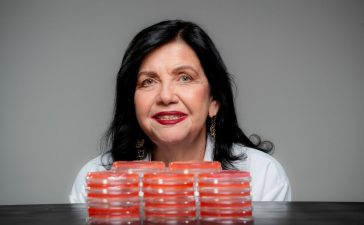If you, like many others, have ever fallen down a rabbit hole trying to learn more about what causes some people to live longer and feel more happiness, then you’ve probably already heard of Blue Zones like Okinawa, Japan.
Blue Zones are areas in the world with the most people living the longest lives.
On average, Okinawan women live longer lives than women from all other areas worldwide, according to longevity expert Dan Buettner. Additionally, “Okinawans have less cancer, heart disease and dementia than Americans,” Buettner wrote on his site.
The island’s age-defying residents caught the attention of authors Héctor García and Francesc Miralles. The pair interviewed over 100 of the oldest people in Okinawa and wrote about the principles and techniques that Japanese centenarians adhere to daily in their book titled Ikigai: The Japanese Secret to a Long and Happy Life.
Here are a few of the practices that contribute to the longevity and happiness of some of Japan’s longest-living people.
3 daily practices for a ‘long and happy life’
1. Engage in low-intensity movement for at least 5 minutes a day
Just about every super-ager that García and Miralles spoke to shared that they regularly practice radio taiso which is a well-known, decades-old Japanese exercise.
“Even the residents of the nursing home we visited dedicated at least five minutes every day to it, though some did the exercises from their wheelchairs,” the authors wrote in their book.
It helps that the exercise calls for low-intensity movements and can be completed in five minutes or less. And what makes the practice really stand out is that it’s typically done among groups of people.
One of the main goals of radio taiso is to “promote a spirit of unity among participants,” according to García and Miralles.
2. Find a purpose and stay busy
There’s a Japanese proverb that states: “Only staying active will make you want to live a hundred years.” Okinawans achieve this by finding their ikigai, or purpose, that encourages them to focus on their deeper meaning in life.
Ikigai can be loosely translated to “the happiness of always being busy.” Often, people who live the longest don’t retire.
For example, Hayao Miyazaki, 83, is the director of animated films at Studio Ghibli in Japan. A day after retiring in the 90s, Miyazaki came to work to sketch new animations; he just released a movie in 2023.
3. Achieving a state of flow
“There is no magic recipe for finding happiness, for living according to your ikigai,” García and Miralles wrote in their book. “But one key ingredient is the ability to reach this state of flow and, through this state, to have an ‘optimal experience.'”
Flow is a concept used to describe being fully engaged in an action, and it was coined by psychologist Mihaly Csikszentmihalyi.
Being engulfed in a state of flow allows you to be more present, improve your focus and temporarily forget about your worries, according to García and Miralles.
“The happiest people are not the ones who achieve the most,” they wrote. “They are the one who spend more time than others in a state of flow.”
Want to be a successful, confident communicator? Take CNBC’s new online course Become an Effective Communicator: Master Public Speaking. We’ll teach you how to speak clearly and confidently, calm your nerves, what to say and not say, and body language techniques to make a great first impression. Sign up today and use code EARLYBIRD for an introductory discount of 30% off through July 10, 2024.
Plus, sign up for CNBC Make It’s newsletter to get tips and tricks for success at work, with money and in life.











